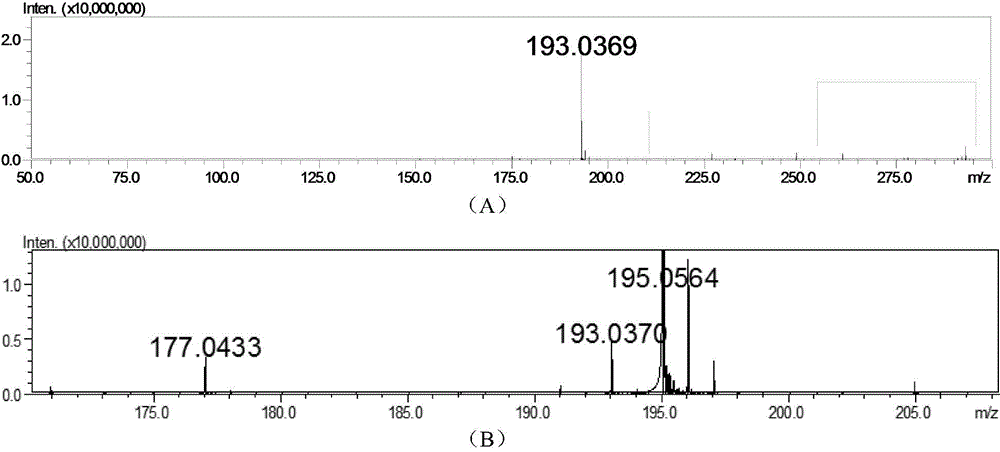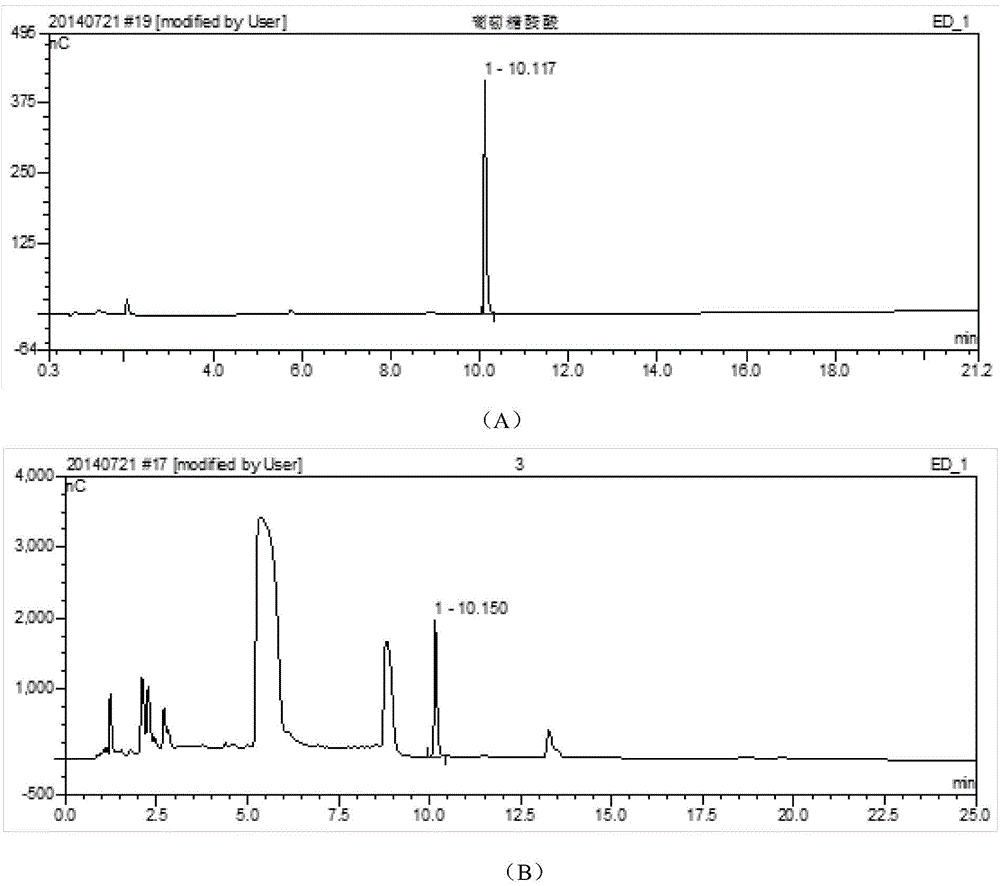Gluconacetobacter saccharivorans strain capable of producing free glucuronic acid
A technology of glucuronic acid and glucuronic acid bacteria, applied in the direction of bacteria, microorganism-based methods, microorganisms, etc., can solve the problem of lack of independent strains of free glucuronic acid, etc., and achieve easy promotion and use, easy control of the production process, and reaction conditions mild effect
- Summary
- Abstract
- Description
- Claims
- Application Information
AI Technical Summary
Problems solved by technology
Method used
Image
Examples
Embodiment 1
[0025] Example 1 Screening of Gluconacetobacter saccharin
[0026] Take a small amount of kombucha fungus film to enrich in GYC medium, culture at 30°C, 200r / min shaker for 48h, and then dilute to 10 -3 、10 -4 、10 -5 、10 -6 、10 -7 For 5 gradients, 200 μL of each diluted sample was applied to the GYC solid medium added with 100 mg / mL natamycin, and each dilution gradient was repeated twice. Single colonies were picked and cultured at 30°C for 72h. Select a single colony with a transparent circle and inoculate it on GY medium, cultivate it on a shaker at 30°C and 200 r / min until the logarithmic phase, collect samples and store it, collect the fermentation broth after 72 hours of cultivation, centrifuge, and take the supernatant for detection. A strain of Gluconacetobacter with the highest yield was screened from many screened strains for further strain identification.
Embodiment 2
[0027] The identification of embodiment 2 object strains:
[0028] (1) 16S rDNA comparison and identification
[0029] The genomic DNA of the starting strain was extracted, and the genomic DNA of the starting strain was used as a template to amplify using bacterial 16S rDNA PCR general primers 27F and 1492R.
[0030] The PCR method is as follows: Add 1.5 μL of 10mol / L primers 27F and 1492R to the 50 μL reaction system, 25 μL of 2×Super Pfu Mixture, 1 μL of template, add double distilled water to make up to 50 μL:; PCR conditions are: 94 ° C, 3 min, Denaturation at 94°C for 30s, annealing at 55°C for 30s, extension at 68°C for 1.5min, 30 cycles, extension at 68°C for 8min.
[0031] Purify the PCR product with a gel recovery kit and verify it by nucleic acid electrophoresis. The 16S rDNA sequencing was completed by Shanghai Sangon Biotechnology Co., Ltd. The sequencing results were compared with the existing sequences in NCBI for Blast analysis. The results showed that it had ...
Embodiment 3
[0034] Example 3 Determination of the detection method of glucuronic acid in exopolysaccharides:
[0035]The bacteria were cultured in GY medium at 30°C and 200r / min for 72h, centrifuged at 8000rpm for 15min, and the supernatant was taken. Ethanol was added to the supernatant with 4 times the volume of the supernatant, and the mixture was kept at 4 °C overnight. The precipitate was collected by centrifugation at 8000r / min for 15 minutes. The precipitate was dried, and 0.5 mol / L H of 5 times the volume of the supernatant was added 2 SO 4 Solution, reacted at 70°C for 3h. The hydrolyzate was filtered through a 0.45 μm filter membrane, and the product was detected by LCMS. The detection result showed that the exopolysaccharide did not contain glucuronic acid.
PUM
| Property | Measurement | Unit |
|---|---|---|
| diameter | aaaaa | aaaaa |
Abstract
Description
Claims
Application Information
 Login to View More
Login to View More - R&D
- Intellectual Property
- Life Sciences
- Materials
- Tech Scout
- Unparalleled Data Quality
- Higher Quality Content
- 60% Fewer Hallucinations
Browse by: Latest US Patents, China's latest patents, Technical Efficacy Thesaurus, Application Domain, Technology Topic, Popular Technical Reports.
© 2025 PatSnap. All rights reserved.Legal|Privacy policy|Modern Slavery Act Transparency Statement|Sitemap|About US| Contact US: help@patsnap.com


